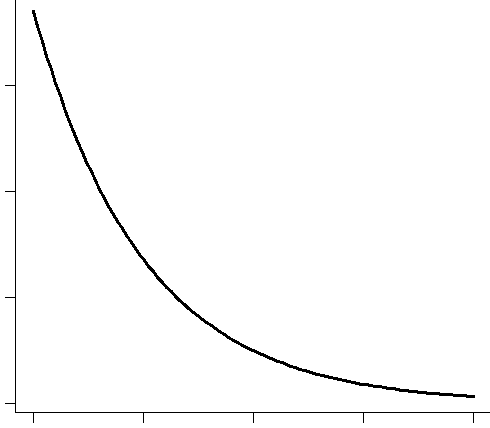- #1
caters
- 229
- 9
With 44000 people on a generation ship for genetic diversity reasons, it is inevitable that some will be ill.
However, if I were to go through a list of every infectious illness and decide whether or not it is allowed, should I have a death rate limit? Is there a point at which pregnancy rate and more importantly birth rate, can't overcome the death rate from infection assuming an average death rate of 8 per 1000 per year from other causes?
So is there a point at which death rate from infection would cause something like this to happen to the population:

In other words exponential decay once the birth rate lowers to below the death rate?
Assuming about a fourth of the women are in the fertile window per week and a sex ratio of 1:1, this means with every pairing, there is at most a 25% pregnancy rate per week in the population. But of course, those that didn't get pregnant before would try again and so it would increase to be more than 50% of the women within a month that get pregnant, say something like 80%. Of those that get pregnant say 20% miscarry and 1% end up with a stillbirth. This would mean a 79% birth rate in pregnant women which would mean a 31.6% birth rate in the population overall. And this 31.6% would be every 2 years because these women breastfeed for 2 years.
I am stuck as to how to figure out what the minimum death rate to result in eventual exponential decay is and thus the maximum death rate that would not lead to exponential decay, just a slow population growth.
However, if I were to go through a list of every infectious illness and decide whether or not it is allowed, should I have a death rate limit? Is there a point at which pregnancy rate and more importantly birth rate, can't overcome the death rate from infection assuming an average death rate of 8 per 1000 per year from other causes?
So is there a point at which death rate from infection would cause something like this to happen to the population:

In other words exponential decay once the birth rate lowers to below the death rate?
Assuming about a fourth of the women are in the fertile window per week and a sex ratio of 1:1, this means with every pairing, there is at most a 25% pregnancy rate per week in the population. But of course, those that didn't get pregnant before would try again and so it would increase to be more than 50% of the women within a month that get pregnant, say something like 80%. Of those that get pregnant say 20% miscarry and 1% end up with a stillbirth. This would mean a 79% birth rate in pregnant women which would mean a 31.6% birth rate in the population overall. And this 31.6% would be every 2 years because these women breastfeed for 2 years.
I am stuck as to how to figure out what the minimum death rate to result in eventual exponential decay is and thus the maximum death rate that would not lead to exponential decay, just a slow population growth.
